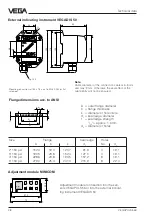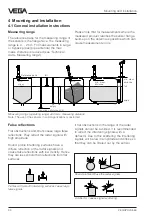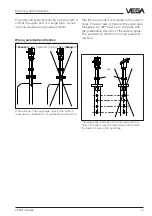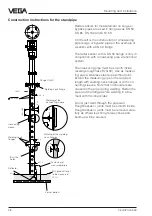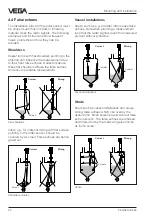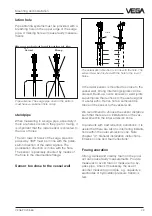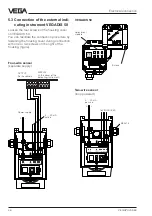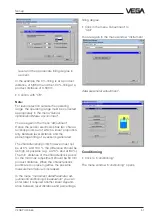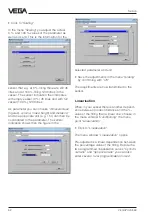
38
VEGAPULS 56K
,,,,,,,,,,,,,,,,,,,,,,,,,,,,,,,,
,,,,,,,,,,,,,,,,,,,,,,,,,,,,,,,,
,,,,,,,,,,,,,,,,,,,,,,,,,,,,,,,,
0 %
~45˚
ø 51,2
0
,0
…
0
,4
1,5…2
2,9
0
,0
..
.0
,4
1
5
0
…
5
0
0
5
…
1
5
2,9…6
100 %
Mounting and installation
Construction instructions for the standpipe
Radar sensors for measurement on surge or
bypass pipes are used in flange sizes DN␣ 50,
DN␣ 80, DN␣ 100 and DN␣ 150.
On the left is the construction of a measuring
pipe (surge or bypass pipe) in the example of
a sensor with a DN␣ 50 flange.
The radar sensor with a DN␣ 50 flange is only in
conjunction with a measuring pipe a functional
system.
The measuring pipe must be smooth inside
(average roughness Rz␣
≤
␣ 30). Use as measur-
ing pipe a stainless steel pipe without joint.
Extend the measuring pipe to the required
length with welding neck flanges or with con-
necting sleeves. Note that no shoulders are
caused in the pipe during welding. Fasten the
pipe and the flange before welding in aline-
ment with the inner sides.
Do not just weld through the pipe wall.
Roughnesses or joints must be smooth inside.
Roughnesses or joints must be removed care-
fully as otherwise strong false echoes and
build-up will be caused.
Flange DN 50
Welding neck flange
Connecting
sleeve
Welding neck
flanges
Welding of the
connecting sleeve
Welding of the welding
neck flanges
Fastening of
measuring pipe
Vessel bottom
Deflector
Min. product level
to be measured
(0␣ %)
Rz
≤
30
Burr the
holes





